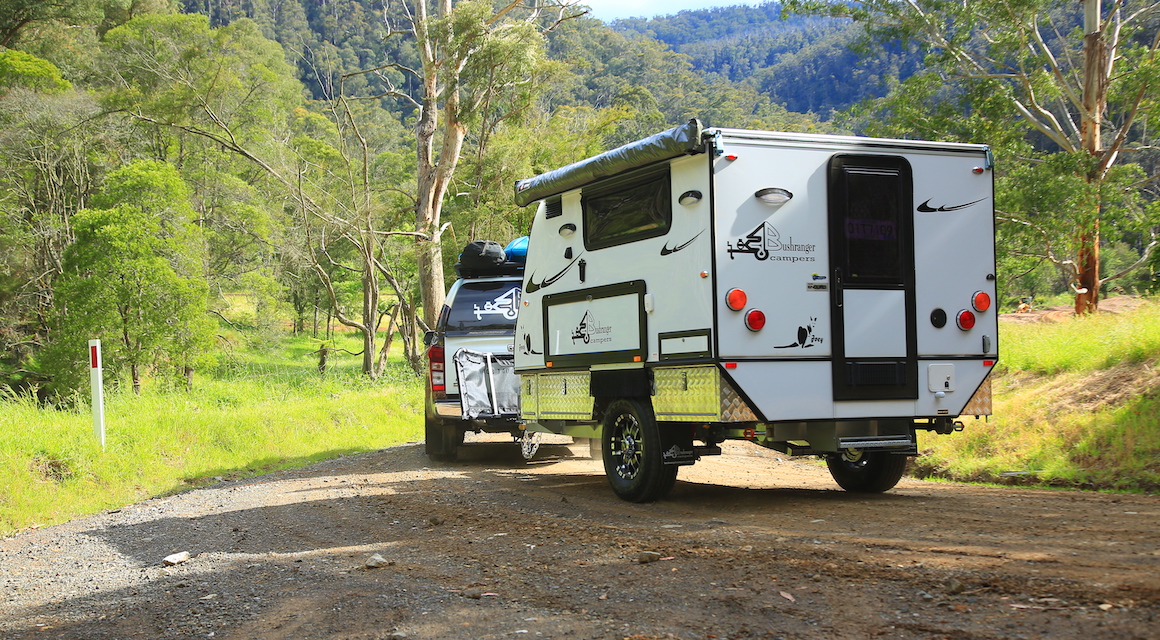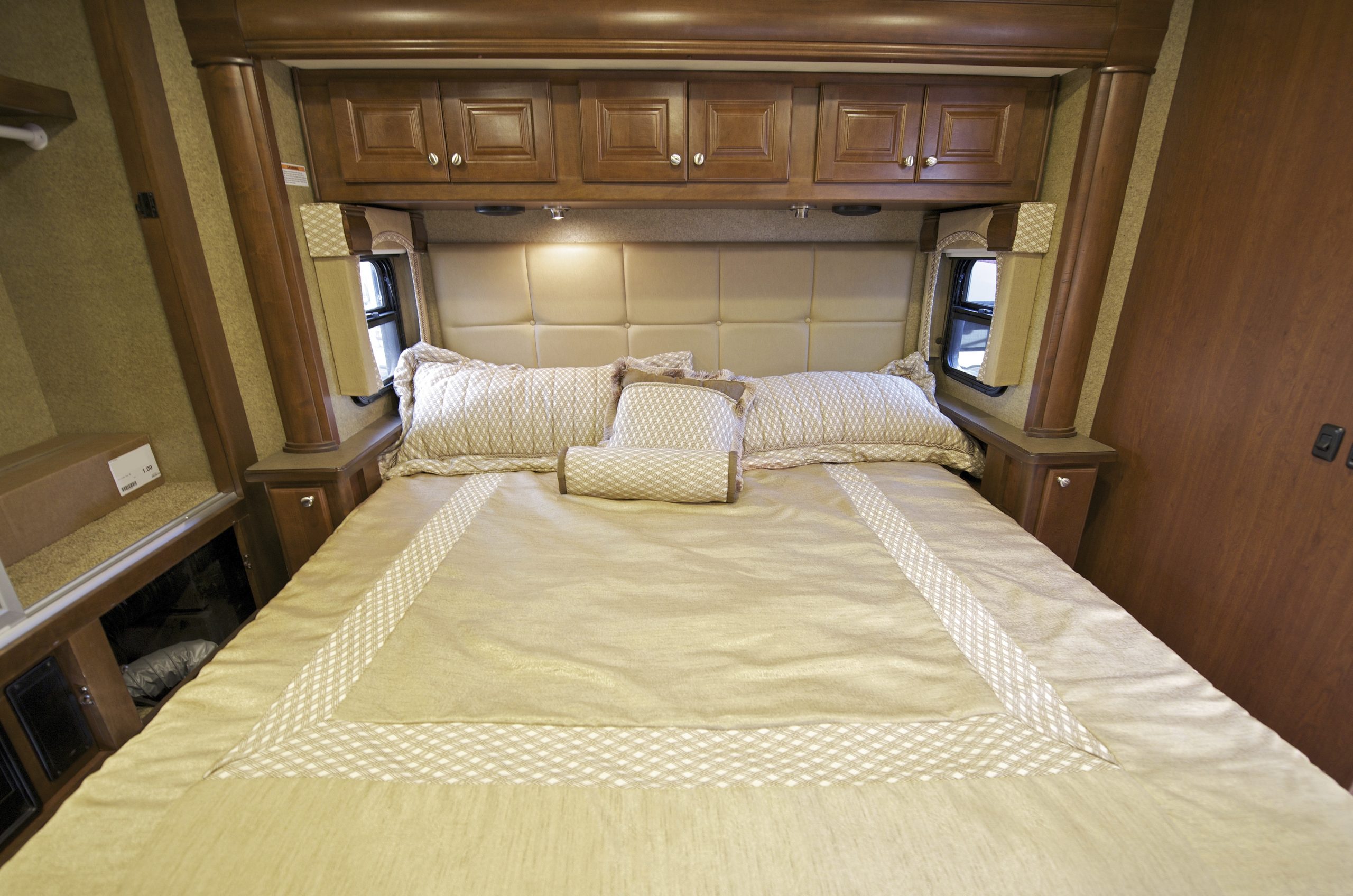8 Top tips for driving on sand, and how to get yourself out of trouble should you get bogged.
1. Avoid saltwater
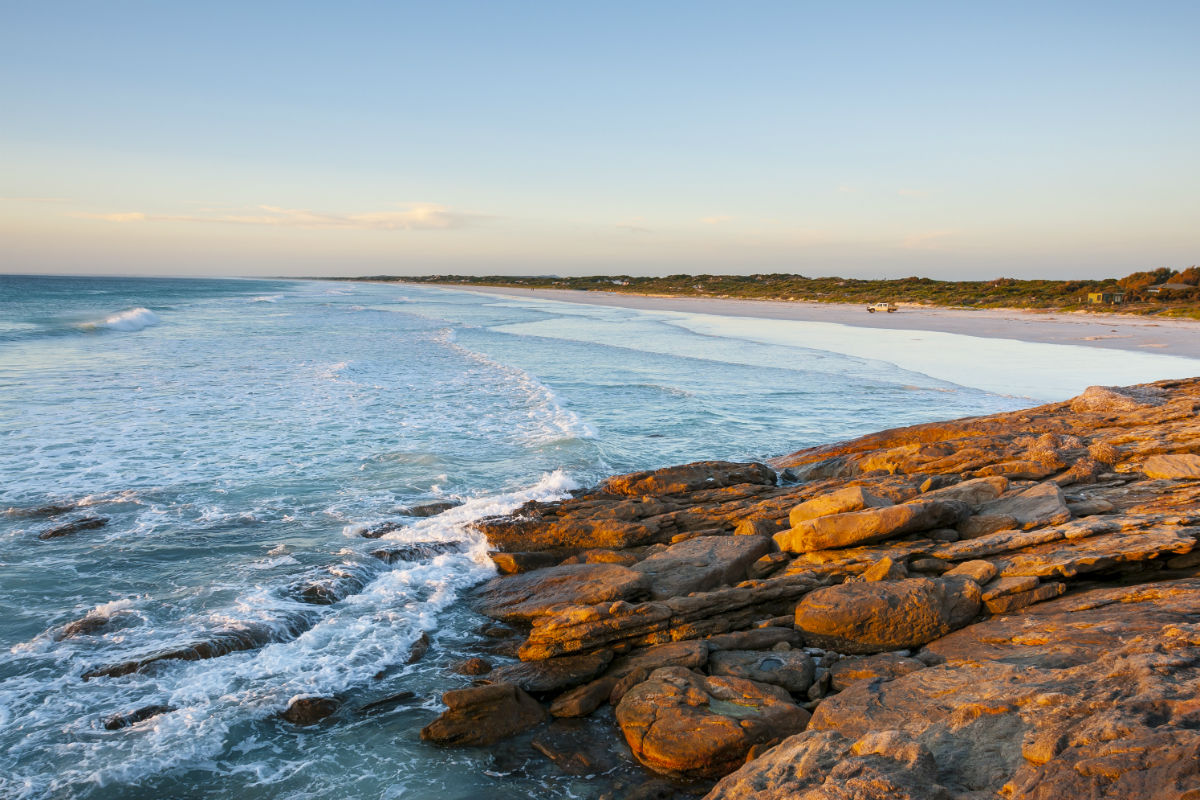
Forget the car ads you see with carefree drivers hooning through the shore break. Your best option in the first place is to drive just below the high tide mark. This will offer better traction than the softer sand above the tidemark and will give you a better chance of escape if you have misjudged the tide.
2. Know the tides
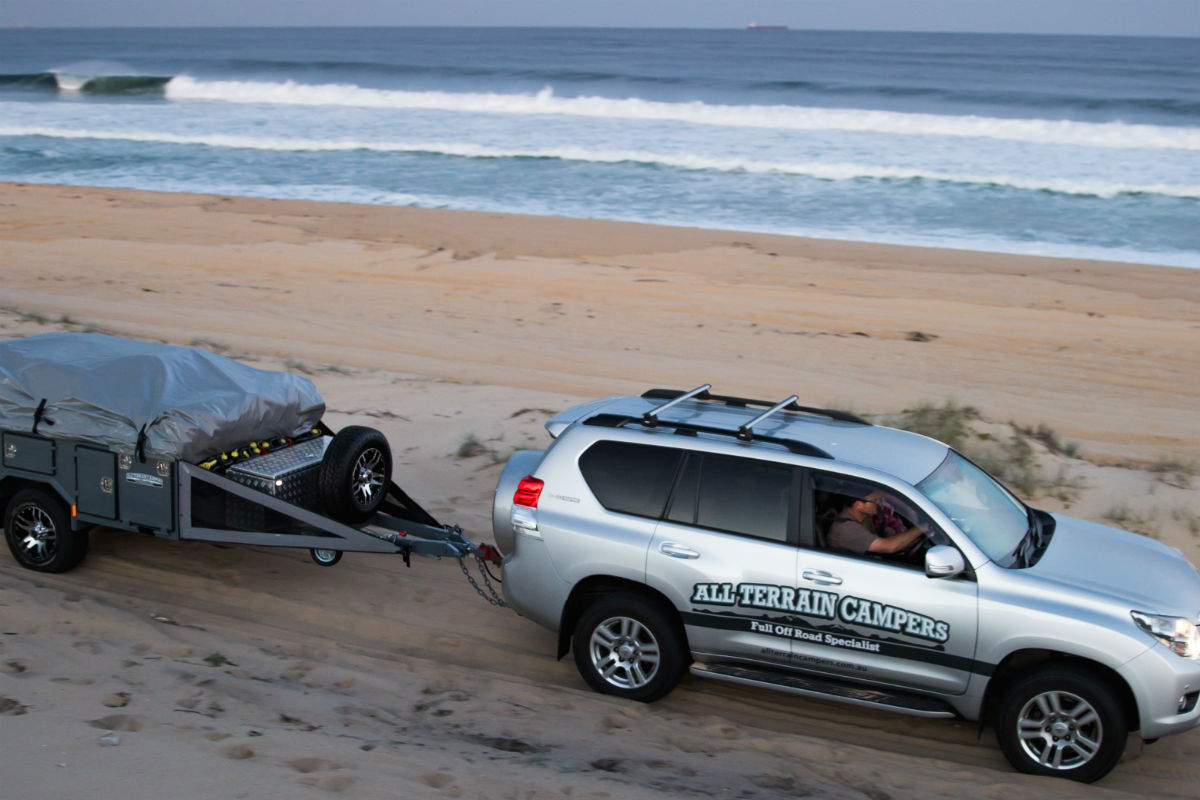
You should never attempt to drive on any beach unless you have a good knowledge of the tides. Where possible, it’s always best to drive on a falling tide, rather than a rising one. The movement of the tide very often influences the way the sand will handle weight. Anyone who has been beach fishing, or has simply stood on the tide line, will recall how you sink a bit each time another wave comes in. Imagine this if the weight happens to be your pride and joy.
3. Maintain a balanced momentum
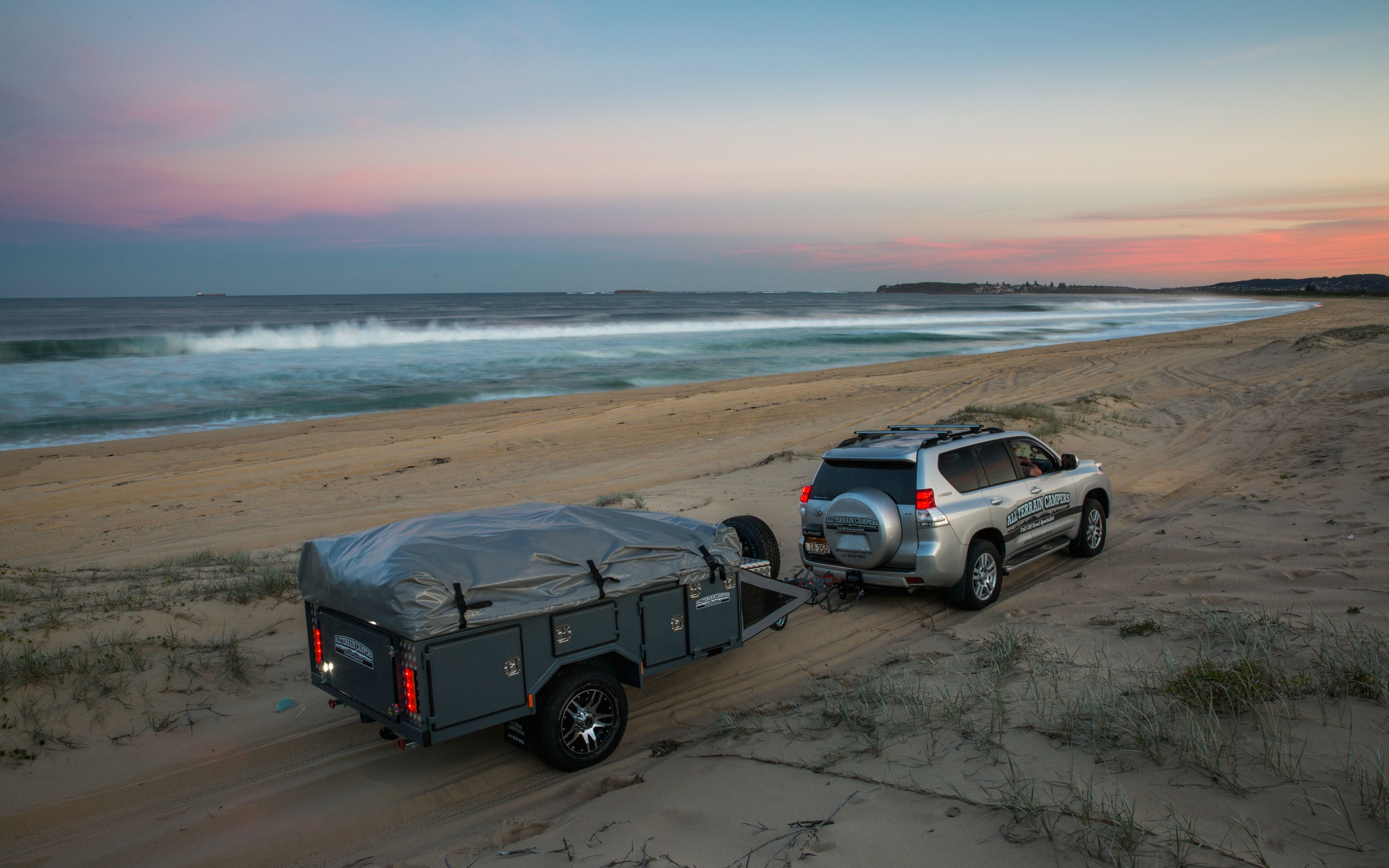
Momentum is important in beach driving, but this doesn’t mean you get along with your foot flat to the floor. Choosing a speed that offers both momentum and control is crucial. Sand can be very unforgiving if you hit the wrong spot at the wrong speed. It is, in fact, the main cause of rollovers, so you need to strike that balance and only practice will get it right.
4. Select the correct gear
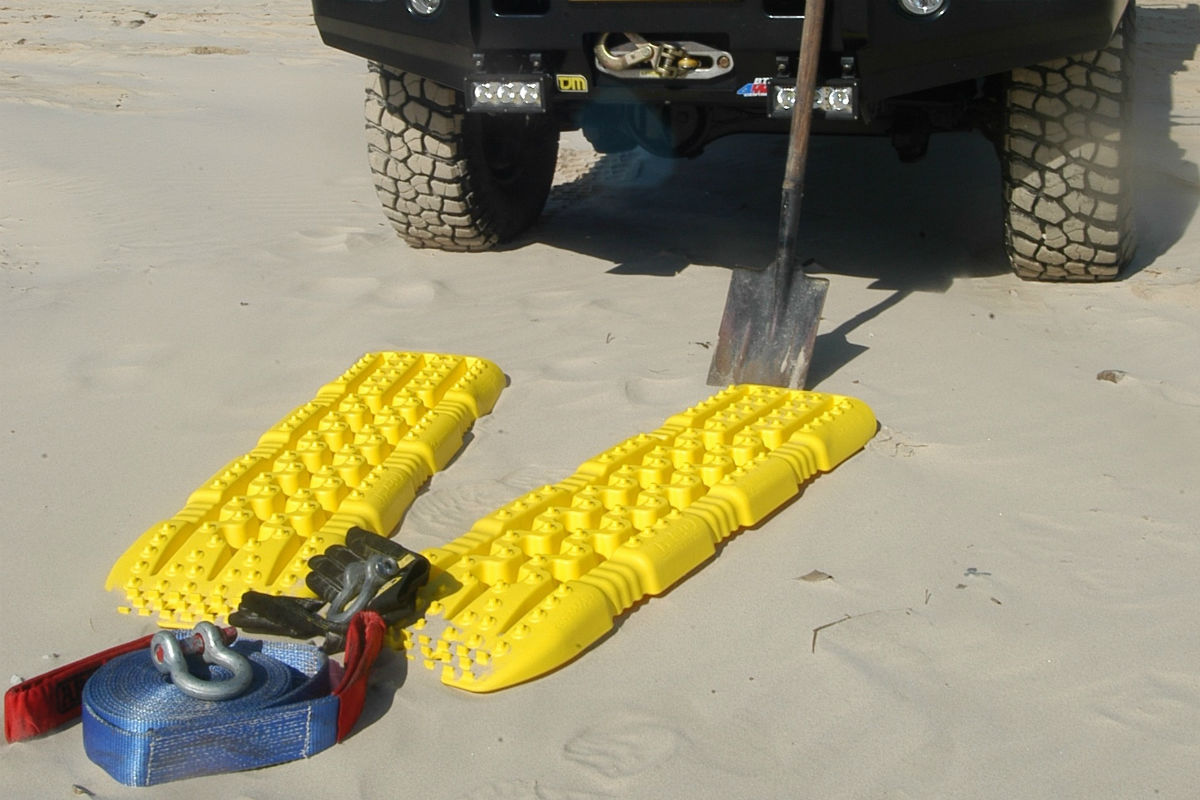
Correct gear choice is essential. For the most part, low-range is seldom needed for beach driving. It puts more power to the ground but hampers momentum, so try to stick with high-range 4WD. In the main gearbox, pick the gear that offers the ideal compromise and stick with it. On a good open beach, high-range third gear may be ideal; on others, second gear. It also depends on the vehicle itself and how heavy your load is. Vehicles with automatic transmission make this choice a lot easier.
5. Be aware of your surroundings
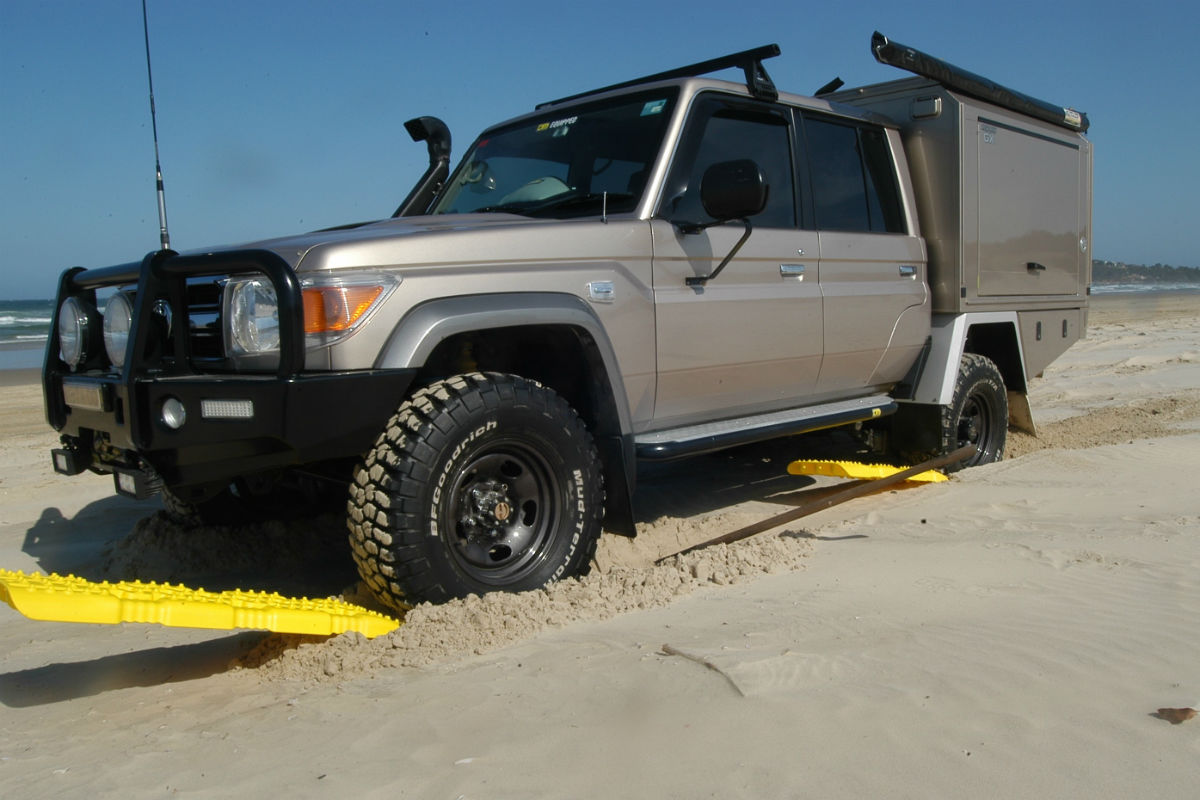
Being aware of what’s ahead of you is vital. It’s considered extremely bad form to drive between a fisherman and the surf. Common courtesy applies, so slow down when you see an oncoming vehicle or some other folks enjoying the beach. Other signs to look for are humps in the sand, usually caused by tidal movement, and obvious indicators of where another vehicle has broken through the surface.
6. Avoid sudden turning and braking
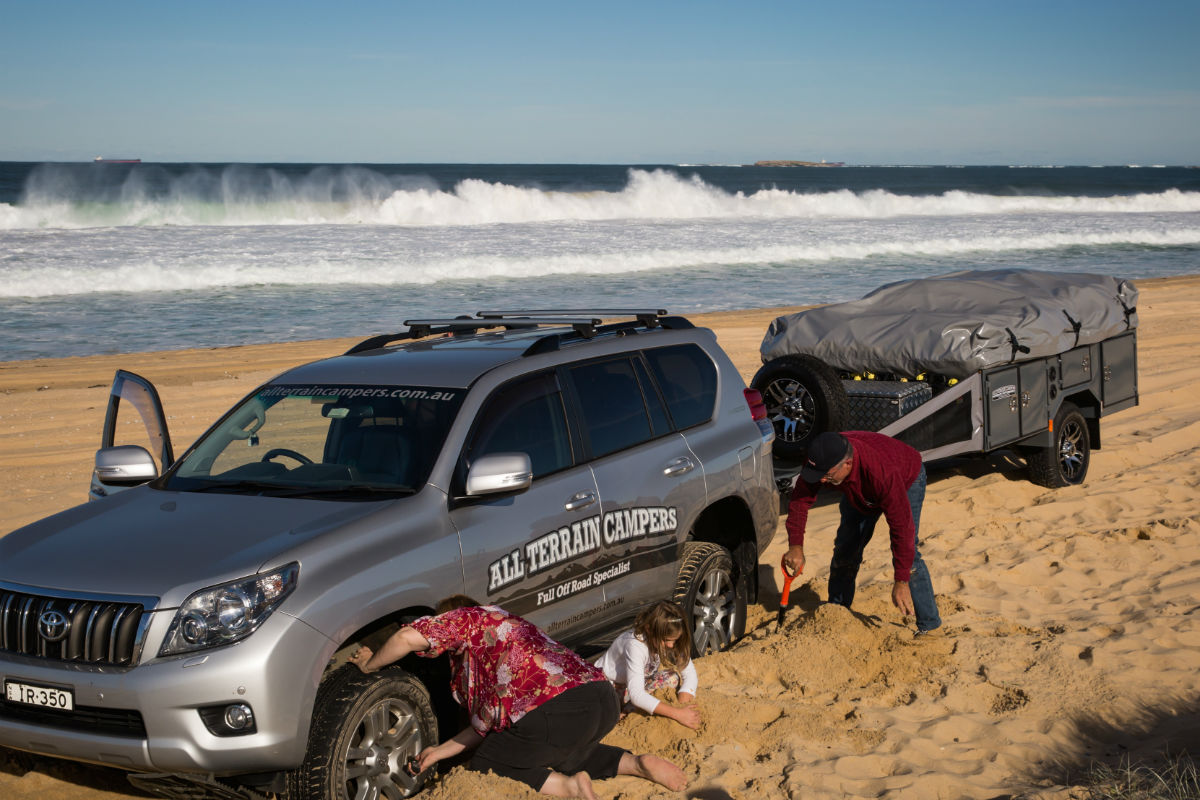
Any turns you make in sand should be gradual; avoid swerving or tight turns. Braking should also be done carefully to avoid bogging or losing control.
7. Drop your tyre pressure
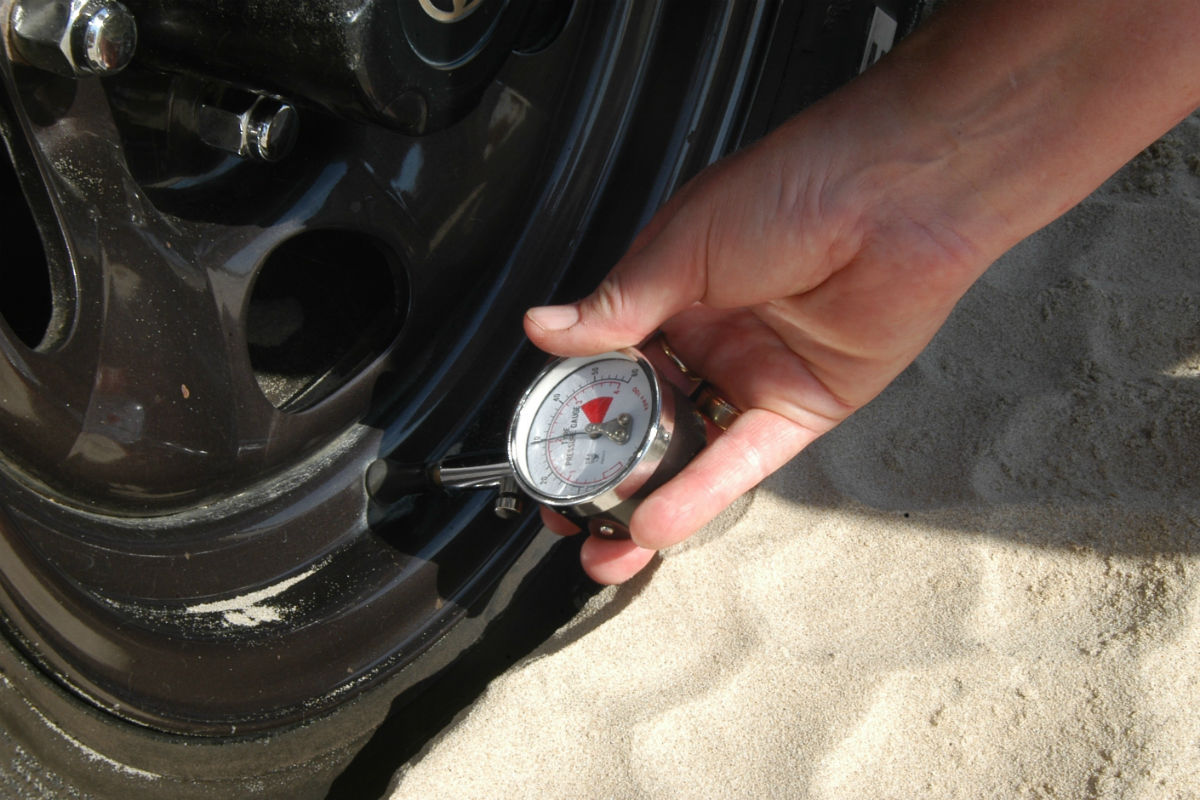
Tyre pressure is probably the best way to avoid a bogging in sand. Wide tyres are no safeguard against bogging and, in some cases, can actually work against you. Tyre pressure for beach driving should be roughly one third of the pressure you run on the bitumen. Drop the pressure too low and you risk running the tyre off the rim. Too high and you don’t allow a big enough “footprint”.
8. Do not drive over vegetated dunes
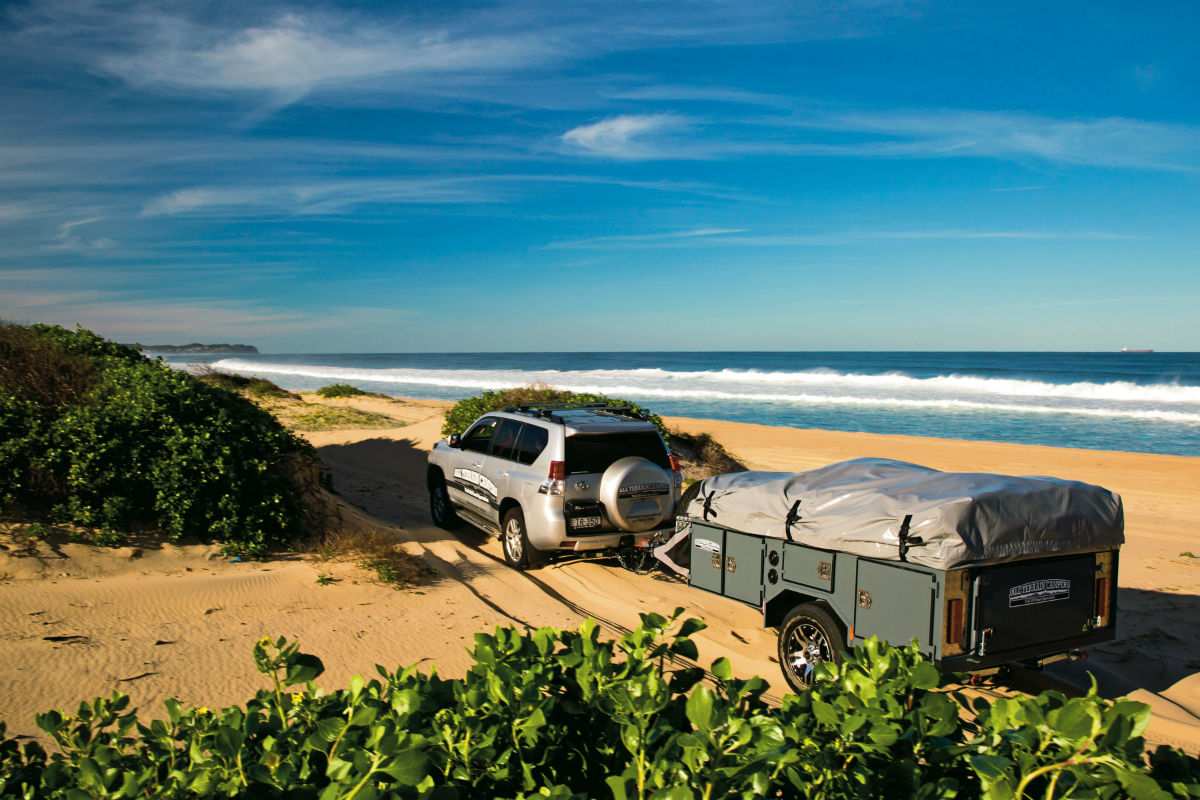
Use only the access tracks in place. Apart from the fact that frontal dunes are held together by grass, they are often the nesting places of shore birds like terns.
GETTING OUT OF TROUBLE
If the worst happens and you do get bogged on a beach, your next move depends on a range of factors. If another vehicle is present and you have a snatch strap, then all should be okay. If you are on your own, then you need a shovel and a set of Maxtrax or similar. The very worst thing you can do is sit there and spin the wheels wildly. All you will succeed in doing is digging yourself into a bigger hole.
When you are stuck, you have to assess the situation then take the appropriate action. Sometimes, just letting the tyre pressures down, or even driving back and forth gently will do it. By driving forward and back, you are compacting the sand. The further back and forth you go, the greater the length of compacted sand for that final, and hopefully successful, attempt.
Winches are only useful if you have something to hook them up to and that’s pretty scarce on a beach. If you have a winch and are by yourself, your only option is to dig in a ground anchor. The hole needs to be deep and you must bury your spare tyre well down, so you don’t simply pull it out when the load comes on.
A snatch strap is probably the most widely used recovery tool on the beach, and for good reason. Otherwise known as a “kinetic energy strap”, a good quality strap will stretch up to a third of its length, then contract. The stored, or kinetic, energy in the strap is the main ingredient in getting you out of trouble.
The technique goes like this: the bogged vehicle attaches the strap to a suitable recovery point and the recovery vehicle does the same. Leaving up to a third of the strap’s length laid loose on the ground, the recovery vehicle selects first gear high-range, while the bogged vehicle selects second gear. The theory behind this is that if the bogged vehicle selects the same gear as the recovery vehicle, they may bog together. Not good. The driver of the bogged vehicle waits until the slack is almost taken up, then accelerates.
Preparation before any attempt at recovery is vitally important. Use the long-handled shovel you should have to remove any sand away from diffs and gearbox housings, and dig a little trench in front of the wheels. If you have not dropped the tyre pressure by this time, then do it. Subsequent attempts at de-bogging frequently get tougher each time, so you must try to get it done the first time.
All of this assumes that you have been driving just below the high tide mark. If you’ve got yourself bogged down in the wet sand, you are in real trouble. If you don’t get unstuck before the tide comes in, it’s time to call the insurance company. Any vehicle bogged on an incoming tide will sink further into the sand and require the services of a tractor, or better. That will spoil your day and your bank account.




